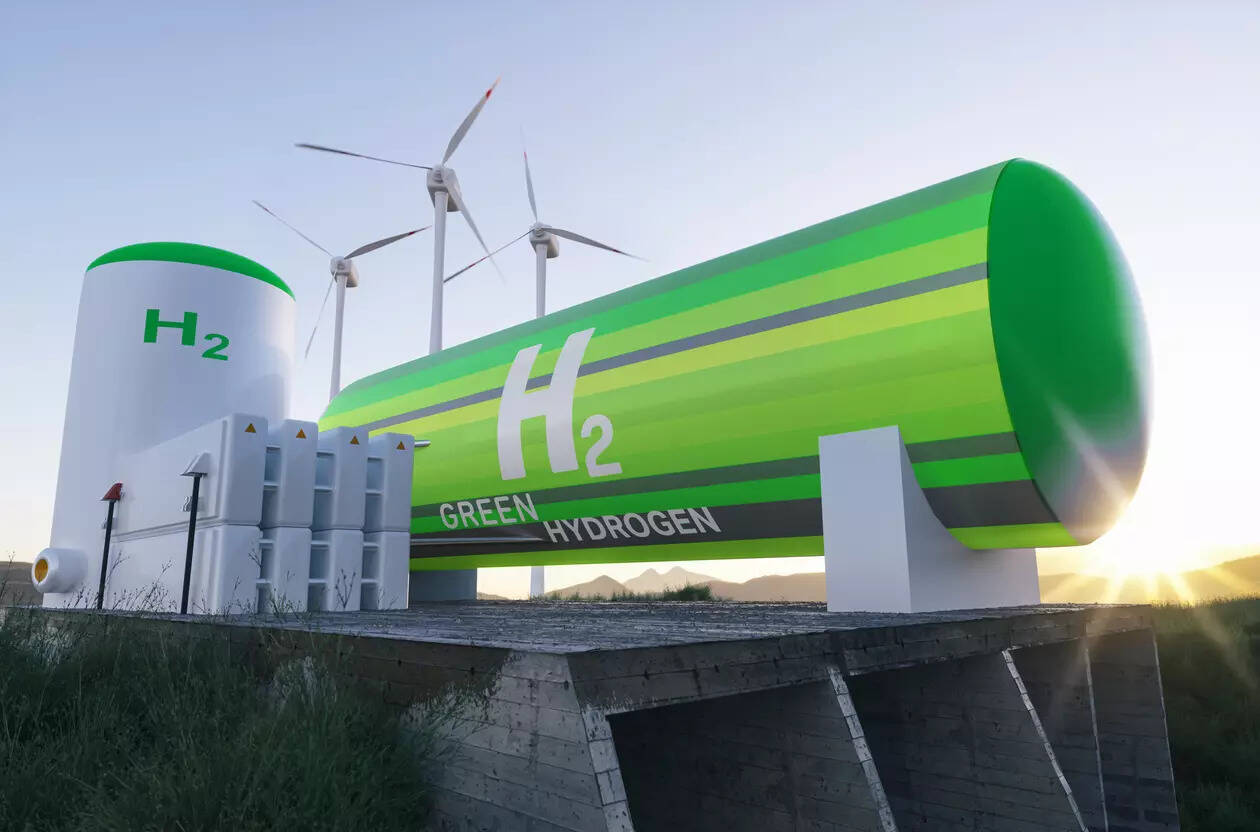
Think of an iconic image of the petroleum age, and you may well be picturing a fountain of crude spouting hundreds of feet into the air, scattering thousands of barrels around a smashed drilling derrick.
From Spindletop — the Texan oilfield whose 1901 blowout kickstarted the oil era and sparked nearby Houston’s transformation into one of America’s biggest cities — to the disaster 109 years later when a gusher on the seafloor of the Gulf of Mexico destroyed the Deepwater Horizon rig, such geysers have been synonymous with both the wealth and the damage that hydrocarbons can bestow. Those who hope to remake the energy industry for a zero-emissions world are still looking for their equivalent.
Right now, the absence of a gas gusher is the main factor holding back geological hydrogen, a promising fuel that few had given any thought to 12 months ago. For decades, chemists and engineers have argued the simplest molecule, with the formula H2, might supplant the role of oil and gas in providing the heat, energy, and chemical feedstocks on which modern society depends. Only recently have geologists realized the earth’s crust might hold vast quantities of the stuff.
It was long assumed that hydrogen’s reactivity would make it vanishingly rare in nature. That view looks much less solid now. Natural processes are probably producing 23 million metric tons a year, according to one paradigm-breaking 2020 study. Unpublished research by the US Geological Survey suggests that’s a gross underestimate: There might be 5 trillion tons below the surface, capable of producing 500 million tons a year, the Financial Times reported last month. That could be sufficient to displace about 40% of current natural gas consumption. The discoveries might spark a “clean energy gold rush,” New Scientist magazine announced in a recent cover story.
As with previous gold rushes, the experts in the field are veterans of former booms. Avon McIntyre and Benjamin Mee worked for Shell Plc’s gas business before setting up HyTerra Ltd., focusing on a region of Kansas where an oil driller had found hydrogen was making it harder to set the cement needed to seal up well holes. Their leases appear to contain about 238,000 tons of hydrogen and 470 million cubic feet of helium, according to a prospective resource assessment issued to the Australian Securities Exchange in December.
It’s not simply a matter of transferring expertise, however. Petroleum geologists study the sorts of sedimentary rocks that trap oil and gas, but hydrogen appears to be produced when water interacts with iron-rich volcanic minerals, a quite different type of rock, says Mengli Zhang, a former PetroChina Co. geologist now working at the Colorado School of Mines. Finding promising resources is going to necessitate bringing in expertise from the mining industry and even the geothermal power sector, she said.
“There is the potential for such discoveries, but we don’t know how likely it will be,” she said. “So far, there are no world-class discoveries.”
What’s missing is a Spindletop. It’s precisely the explosive potential of oil and gas reservoirs that makes them economically attractive, according to Arnout Everts, an independent energy consultant based in Kuala Lumpur. Gathering over millions of years in folded, impermeable rock formations deep below the earth, hydrocarbon deposits build up vast pressures that force their riches to the surface the moment a drill bit pierces the rock capping them.
Gushers are what guarantee the vast flow rates needed to supply our fuel demands. A study last month in the journal Science described a discovery of an Albanian mine exhaling about 200 tons of hydrogen a year as “one of the largest recorded H2 flow rates to date.” But that would barely move the needle for a typical green ammonia plant, which would consume tens or even hundreds of thousands of tons of hydrogen a year. Hyterra and Gold Hydrogen Ltd., another company which last month reported a helium resource on a hydrogen exploration tenement near Adelaide, are yet to produce flow-rate data. “We have to generate that information with a drill bit,” says HyTerra’s McIntyre.
There’s still a path for geological hydrogen to succeed, but it’s not the only route to decarbonizing H2. Chinese companies already claim to be able to produce green hydrogen from splitting water molecules with wind and solar power for less than 20 yuan (USD 2.78) per kilogram, with prices worldwide expected to decline toward USD 1/kg as the technology rolls out this decade. Mined green hydrogen will need to decisively undercut those numbers if it’s to compete.
Right now, there’s a gold rush brewing in green H2. If they don’t hit pay dirt, though, the current wave of prospectors will move on to the next hot commodity. Geological hydrogen is enjoying its moment in the sun. It had better start showing results soon.

